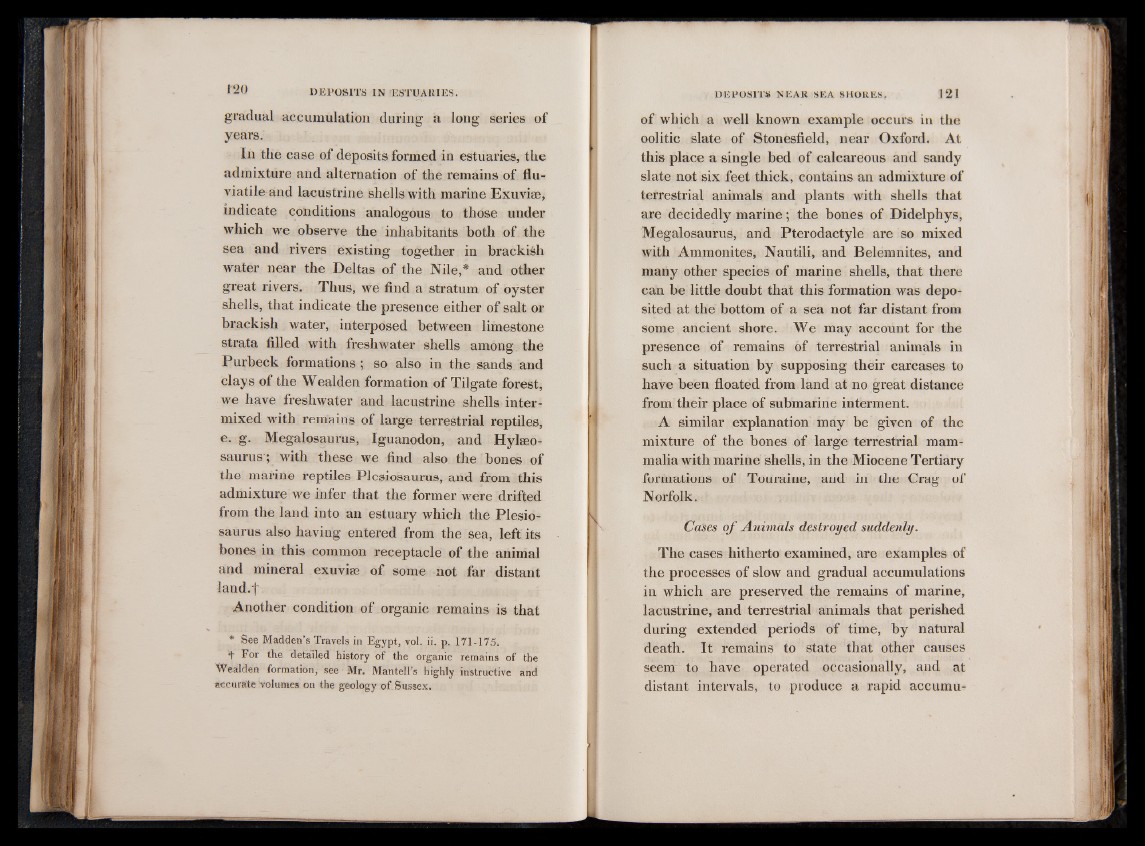
gradual accumulation during a long series of
years.
In the case of deposits formed in estuaries, the
admixture and alternation of the remains of flu-
viatile and lacustrine shells with marine Exuviae,
indicate conditions analogous to those under
which we observe the inhabitants both of the
sea and rivers existing together in brackish
water near the Deltas of the Nile,* and other
great rivers. Thus, we find a stratum of oyster
shells, that indicate the presence either of salt or
brackish water, interposed between limestone
strata filled with freshwater shells among the
Purbeck formations ; so also in the sands and
clays of the Wealden formation of Tilgate forest,
we have freshwater and lacustrine shells intermixed
with remains of large terrestrial reptiles,
e. g. Megalosaurus, Iguanodon, and Hylaeo-
saurus ; with these we find also the bones of
the marine reptiles Plesiosaurus, and from this
admixture we infer that the former were drifted
from the land into an estuary which the Plesiosaurus
also having entered from the sea, left its
bones in this common receptacle of the animal
and mineral exuviae of some not far distant
land.f
Another condition of organic remains is that
* See Madden’s Travels in Egypt, vol. ii. p. 171-175.
* Eor the detailed history of the organic remains of the
Wealden formation, see Mr. Mantell’s highly instructive and
accurate Volumes on the geology of Sussex.
of which a well known example occurs in the
oolitic slate of Stonesfield, near Oxford, At
this place a single bed of calcareous and sandy
slate not six feet thick, contains an admixture of
terrestrial animals and plants with shells that
are decidedly marine; the bones of Didelphys,
Megalosaurus, and Pterodactyle are so mixed
with Ammonites, Nautili, and Belemnites, and
many other species of marine shells, that there
can be little doubt that this formation was deposited
at the bottom of a sea not far distant from
some ancient shore. We may account for the
presence of remains of terrestrial animals in
such a situation by supposing their carcases to
have been floated from land at no great distance
from their place of submarine interment.
A similar explanation may be given of the
mixture of the bones of large terrestrial mammalia
with marine shells, in the Miocene Tertiary
formations of Touraine, and in the Crag of
Norfolk.
Cases o f Animals destroyed suddenly.
The cases hitherto examined, are examples of
the processes of slow and gradual accumulations
in which are preserved the remains of marine,
lacustrine, and terrestrial animals that perished
during extended periods of time, by natural
death. It remains to state that other causes
seem to have operated occasionally, and at
distant intervals, to produce a rapid accumu